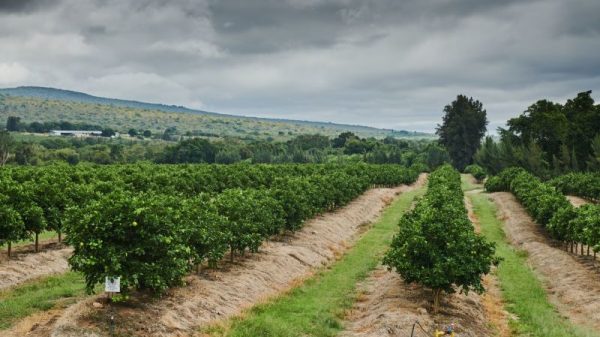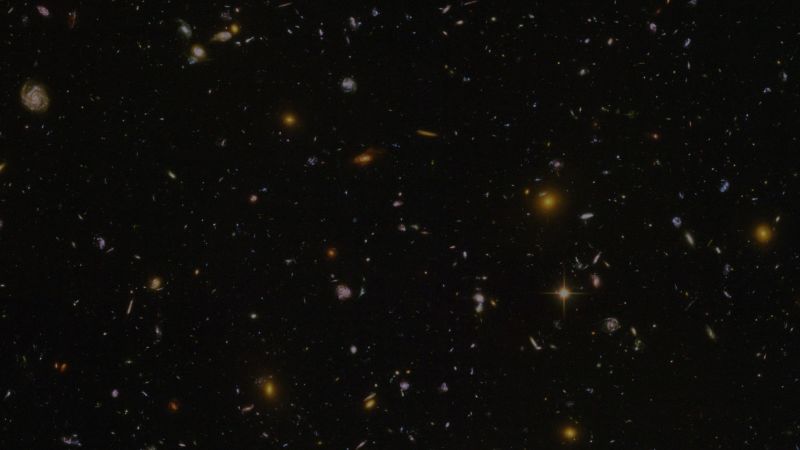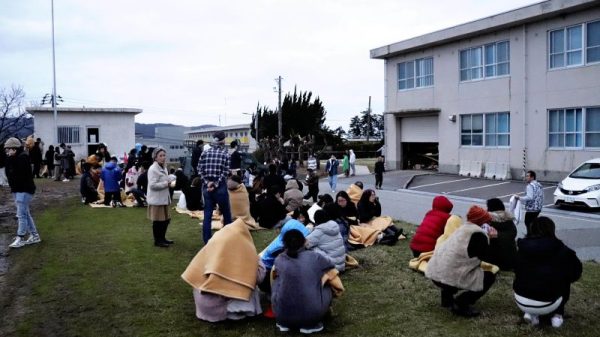People who lived in the Arabian Peninsula thousands of years ago went underground when they wanted to beat the heat. Possibly stopping there as they traveled between oases and pastures, they ducked into vast subterranean tunnels where molten lava had once flowed millions of years earlier, according to a recent study.
Beginning in the Stone Age, Neolithic herders descended into and occupied these vast tunnels, known as lava tubes, archaeologists have discovered. Cooler air underground would have provided a welcome respite from the sun and wind, and for thousands of years, humans sheltered with their livestock in the tunnels. The herders left behind objects and even carved pictures on the rocky walls, researchers reported April 17 in the journal PLOS One.
In the Harrat Khaybar lava field, about 78 miles (125 kilometers) to the north of Medina in Saudi Arabia is a tunnel system called Umm Jirsan, the longest in the region. Scientists haven’t yet confirmed the age of the lava that formed this system, but a 2007 study suggested it was around 3 million years old. Umm Jirsan spans nearly 1 mile (1.5 kilometers), with passages that are up to 39 feet (12 meters) tall and as much as 148 feet (45 meters) wide.
Archaeologists at Umm Jirsan recently found animal bones dating from 400 years to more than 4,000 years ago, and human remains ranging from 150 years to about 6,000 years ago. The research team also found cloth fragments, pieces of carved wood and dozens of stone tools — the first evidence that humans were using the tunnels, starting at least 7,000 years ago.
“From earlier reports we knew that fossils were preserved at the site,” said lead study author Dr. Mathew Stewart, a research fellow at the Australian Research Centre for Human Evolution at Griffith University in Australia.
This discovery highlights the significance of Umm Jirsan and other tunnels for understanding human dispersal in the region, said Guillaume Charloux, an archaeologist with the French National Centre for Scientific Research. In general, knowledge about ancient climate and humans in northwestern Arabia is limited, “particularly during the transitional phase between the Neolithic and the beginning of the 2nd millennium,” said Charloux, who studies ancient sites in Saudi Arabia but was not involved in the new research. .
Around this time, local people were settling around recently formed oases; the appearance of these desert refuges would shape human migration patterns in the region for millennia, he said via email. “The main contribution of this innovative and major research project seems to me to be that it brings to light the long-lasting use — probably ephemeral occupation — of this type of cave, which had remained unstudied, and their enormous potential, particularly for understanding paleoenvironmental contexts.”
‘Green Arabia’
For nearly 15 years, Stewart and his colleagues have been piecing together evidence of ancient human life in Arabia, mostly from sites around lake deposits, Stewart said. Beginning around 400,000 years ago, recurring periods of humidity saturated Arabian deserts with rainfall. During these “Green Arabia” phases, lakes and ponds abounded and the landscape bloomed with lush vegetation, leading to waves of migrating humans who dispersed into southwestern Asia, Stewart and other researchers previously reported in the journal Nature.
But the last Green Arabia phase was around 55,000 years ago, and harsh desert environments aren’t kind to archaeological evidence. While stone tools preserve well in dry deserts, bones and other organic materials are easily degraded and destroyed by erosion and extreme heat and cold, leaving little for researchers to interpret, Stewart noted.
“To that end, in 2019 we decided to investigate underground settings where organics and sediments might be better preserved,” he said.
So the scientists turned their attention to Umm Jirsan. The site had previously been mapped by the Saudi Geological Survey, and a report from 2009 described it as a refuge for wild animals such as foxes, wolves, birds and snakes. Caches of bones in the tunnels included human skull fragments estimated at the time to be about 4,000 years old. But until 2019, the tunnel system hadn’t yet been closely investigated by archaeologists, Stewart said.
“We were able to date the animal bones and sediments, which informed us that people began occupying the cave by 7,000 years ago and perhaps as early as 10,000 years ago,” Stewart said.
Compared with other sites where humans once lived, the amount of archaeological material at Umm Jirsan was “quite scant,” suggesting that people were visiting the tunnels as temporary refuges rather than living there permanently, the study authors reported.
Animal carvings
In another tunnel near Umm Jirsan, the researchers found 16 panels of engraved rock art. The carvings appeared to be herding scenes, with tool-wearing, stick-figure humans standing alongside domesticated animals such as dogs, cattle, goats and sheep. Other carvings showed animals with dramatically arching horns resembling those of an ibex; however, these horned animals could represent a different breed of domesticated goat, according to the study. The carvings’ subjects and their varnish coating hint that they date to a regional period known as the Chalcolithic (around 4500 to 3500 BC), which preceded the rise of the Bronze Age.
“Collectively, the archaeological findings at the site and in the surrounding landscape paint a picture of recurrent use of the Umm Jirsan Lava Tube over millennia,” Stewart said. The site — which lies along a known migratory route for Bronze Age herders — “may have served as a stopping off point, a place of refuge protected from the elements.”
This unprecedented evidence of human occupation in ancient Arabian lava tubes sheds light on how people adapted to live in arid landscapes, and further investigation of Umm Jirsan and other lava tubes promises to add even more details, Stewart added.
“These sites have tremendous potential to fill in some of the gaps in the natural and cultural archives that persist in the Arabian archaeological record.”
Mindy Weisberger is a science writer and media producer whose work has appeared in Live Science, Scientific American and How It Works magazine.


































